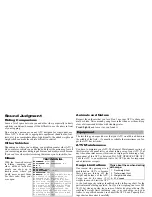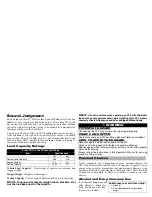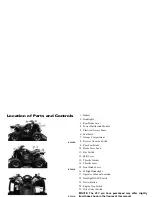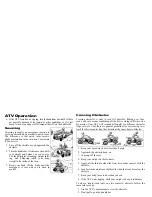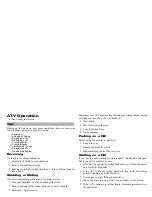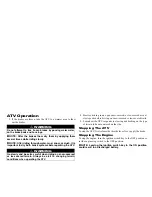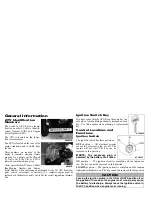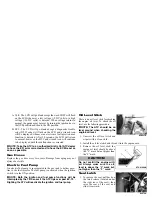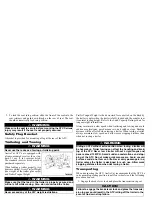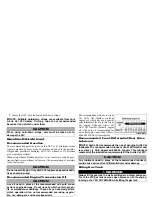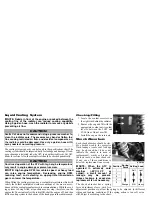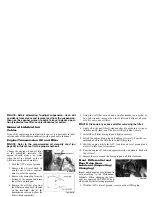
34
ATV Operation
4. If the ATV feels like it’s tipping, turn the handlebar downhill. If that’s
not possible because of the terrain or other conditions or if it just
doesn’t work, stop and get off. Dismount the ATV on the uphill side.
Swerving
Swerving is usually an emergency reaction to
avoid an obstacle but is similar to quick turns.
The difference is that quick turns involve
slight acceleration in the turn; don’t accelerate
if you swerve.
1. Ease off the throttle as you approach the
obstacle.
2. Turn the handlebar. At the same time, shift
your weight and balance as you swerve.
Use the principles of leaning, weight shift-
ing, and balancing—shift your body
weight to the inside of the turn.
3. Keep your hand off the brake until the
emergency is over and you’re back in
control.
Crossing Obstacles
Crossing obstacles is risky; avoid it if possible. Riding over logs,
rocks, and ruts means combining all the active riding skills into one
big motion. Your ATV will respond differently for different obstacles
(logs, ruts, etc.), but these are general guidelines for overcoming two-
track (both tires contacting the obstacle at the same time) obstacles:
1. Keep your speed way down; less than 5 mph.
2. Approach the obstacle head-on.
3. Come up off the seat.
4. Keep your weight on the footrests.
5. Apply a little throttle when the front tires make contact with the
obstacle.
6. Lean forward and release the throttle when the front tires clear the
obstacle.
7. Keep your body loose to absorb any shock.
8. If the ATV starts tipping, shift your weight to keep it in balance.
To clear a single-track (only one tire contacts) obstacle, follow the
same rules except:
1. Use the ATV’s momentum to clear the obstacle.
2. Don’t pull up on the handlebar.
Summary of Contents for 2014 XC 450
Page 71: ...Maintenance Record DATE MILEAGE SERVICE PERFORMED NOTES ...
Page 72: ...NOTES ...
Page 73: ...NOTES ...



